There’s an abundance of wildlife that calls New Hampshire home. As the snow starts to fall and the temperatures begin to dip, birds adapt to the chilly weather and can be found all throughout the Granite State. Here are some of the birds you can spot in New Hampshire during the winter.
1. Black-Capped Chickadee
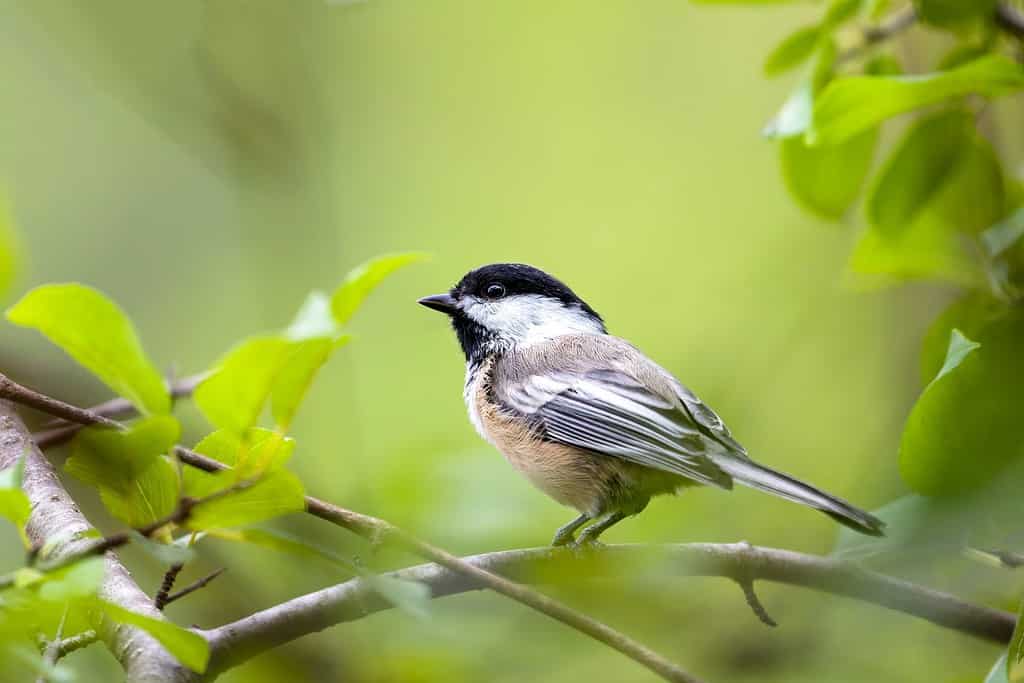
Black-capped
chickadees
weigh less than half an ounce!
©Manu M Nair/Shutterstock.com
One of the easiest birds to spot in New Hampshire is the black-capped chickadee. They’re distinctive black markings on top of their head make them easy to identify. They have a stout, plump body with beautiful white cheeks.
These are social animals that can thrive in a variety of environments such as the suburbs or dense woodland.
2. Blue Jay

This bird can live to nearly 27 years old!
©FotoRequest/Shutterstock.com
Blue jays are one of the most iconic birds in the country. along with cardinals, this is a bird that most children can identify. They are known in the wild for their aggressive and territorial behavior.
You can find them all throughout New Hampshire during the wintertime. To attract them to your yard, make sure your bird feeders have plenty of sunflower seeds and peanuts.
3. Downy Woodpecker

The downy
woodpecker
is the smallest woodpecker in North America.
©J Edwards Photography/Shutterstock.com
Downy woodpeckers are relatively small and can be identified by their black and white feathers. These birds love to peck into trees in hopes of finding a tasty insect. They are excellent climbers and are typically found near trees or open prairies.
If you have dead trees near your yard, you are bound to see a downy woodpecker.
4. Dark-Eyed Junco
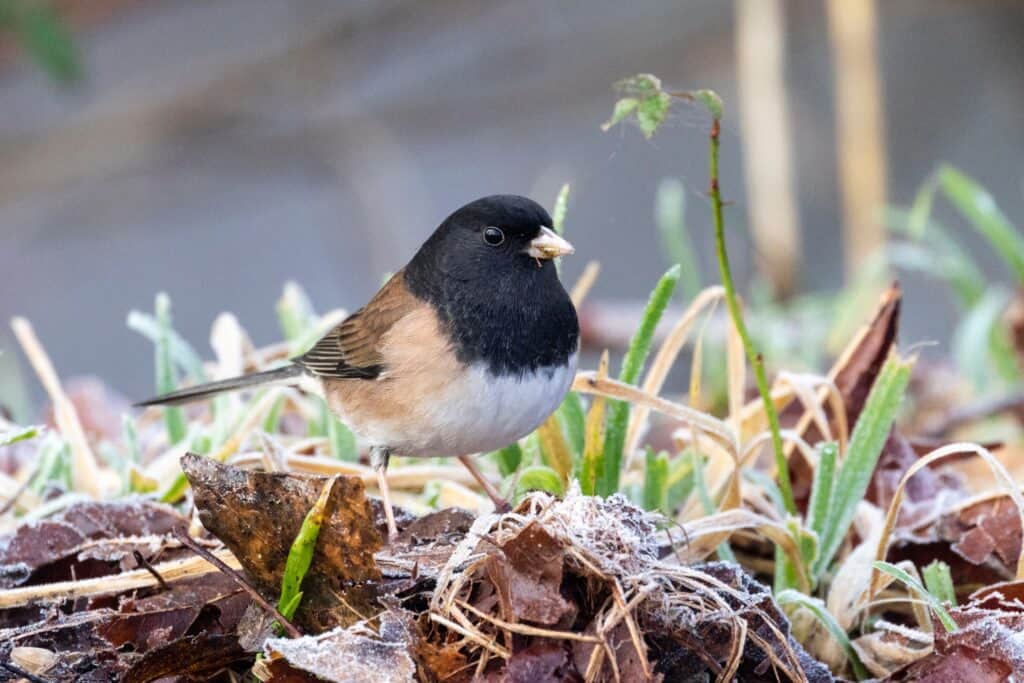
Dark-eyed junco birds are born blind.
©Feng Yu/Shutterstock.com
A small sparrow that calls New Hampshire home in the winter is a dark-eyed Junco. This bird usually has a black or gray head with a white belly. You’ll typically spot a dark-eyed junco on the ground looking for tasty seeds to snack on.
They like to wander around shrubs and thick underground. In the winter, they love to eat seeds, insects, and berries.
5. White-Breasted Nuthatch

The wingspan of a white-breasted nuthatch can reach over nine inches long!
©J. A. Mikulich/Shutterstock.com
Another bird that soars throughout the skies of New Hampshire in the winter is the white-breasted nuthatch. They have long bills and short tails that make them easy to spot. These birds stand out from others because they feed upside down!
White-breasted nuthatches can typically be spotted near mature trees. They love to eat suet, sunflower seeds, and peanuts.
6. Tufted Titmouse

These birds live up to 10 years in the wild.
©Rich Waite/Shutterstock.com
The tufted titmouse is an incredibly friendly bird. They are active all throughout the year and love to hop and fly from one branch to another. while they will feed on a variety of nuts and berries, they prefer insects and seeds.
If you have a bird bath in your yard make sure to fill it with fresh water regularly to attract a tufted titmouse.
7. American Goldfinch
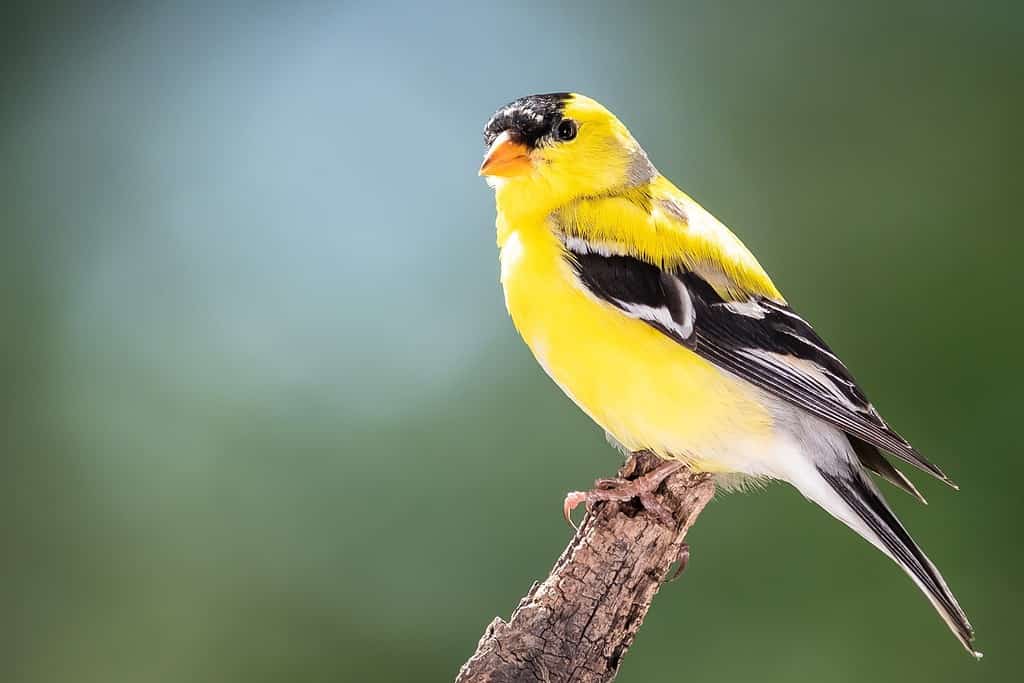
A juvenile American goldfinch is called a chick.
©rck_953/Shutterstock.com
You can find American goldfinches throughout New Hampshire in the winter, though they’re a bit harder to spot. In the springtime, these birds have a stunning bright yellow coloring. This becomes dull as the winter months roll in.
You’ll be able to spot these birds near overgrown fields, in parks, backyards, and anywhere there are sunflower seeds.
8. Cardinal

The cardinal is the state bird of seven states!
©Thomas Torget/Shutterstock.com
With their brilliant red plumage and black markings along their face, the cardinal is one of the easiest birds to identify in New Hampshire. Within the state, they live near dense vegetation, in suburban backyards, and anywhere with plenty of trees.
They are wildly territorial and will even attack their reflection thinking it’s another cardinal.
9. Crow
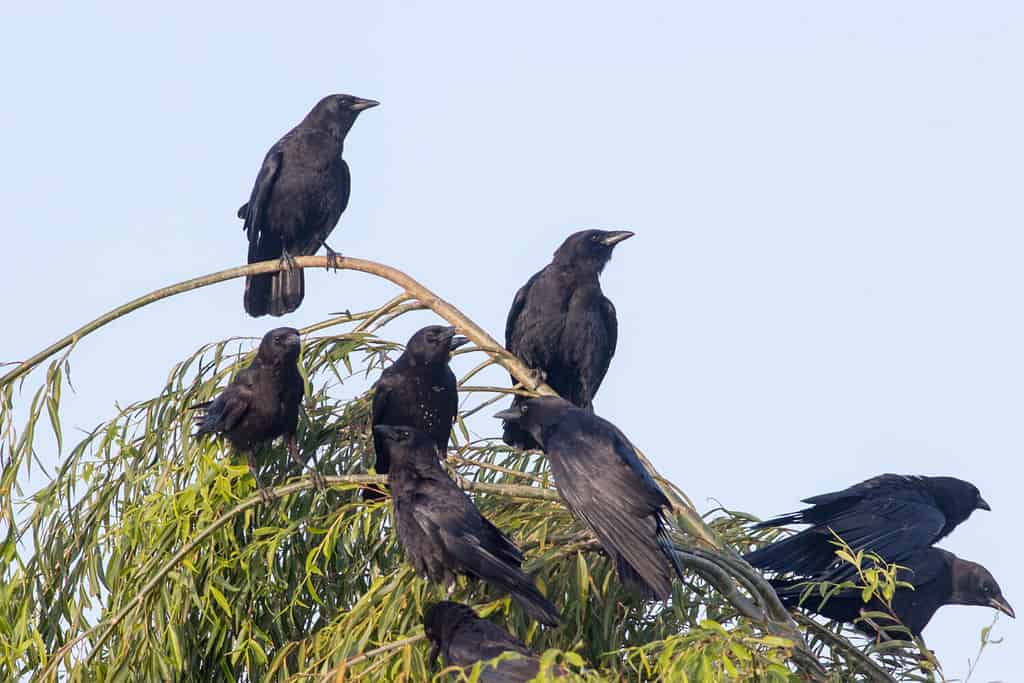
There are at least 40 species of crows around the world.
©Elliotte Rusty Harold/Shutterstock.com
The crow is easy to find in New Hampshire for a variety of reasons. For starters, their iconic cawing noise is quite different from the other sounds birds make. You can find the American crow in treetops, prairies, beaches, and suburban areas. they will eat just about everything from fruit to juvenile turtles.
These birds famously leave “gifts” for people who supply them with food. Despite what Hollywood films may show, crows can be quite kind and even recognize people they’ve interacted with!
10. Mourning Dove

There are roughly 475 million mourning doves on the planet!
©phototrip/iStock via Getty Images
There is something special about a mourning dove. These animals are known for their pump bodies, despite having small heads. You can find mourning doves foraging for food all around the Granite State.
Their cooing call makes it simple to identify a mourning dove from afar. They love cracked corn, black sunflower seeds, and any snacks they may find on the ground.
11. European Starlings
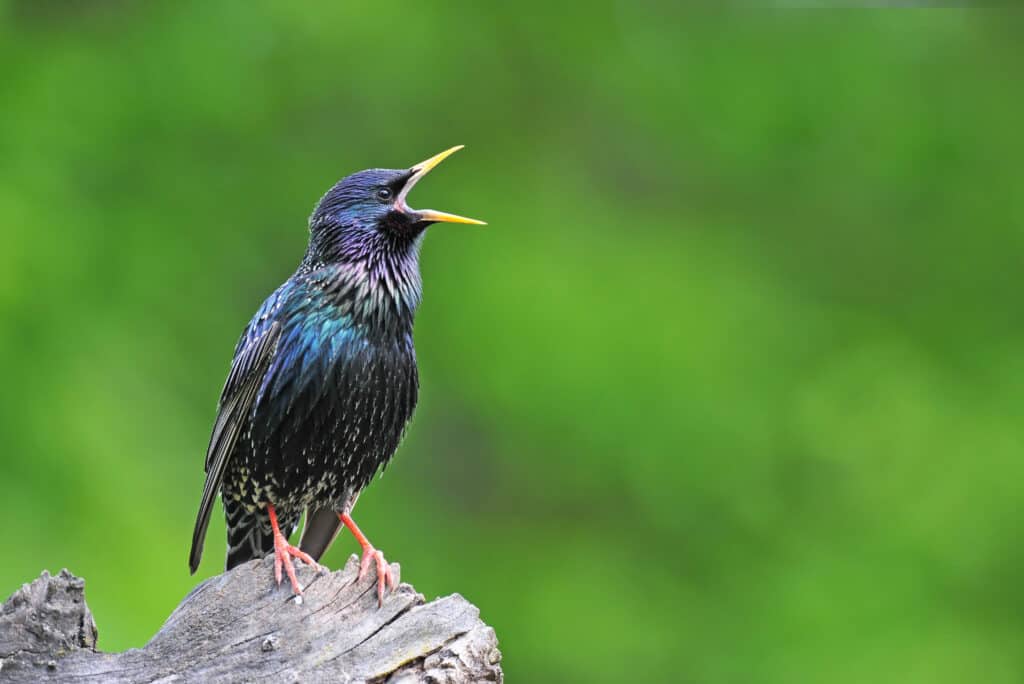
European starlings can mimic other birds, animals, and humans!
©Soru Epotok/Shutterstock.com
The utter beauty of a European starling is worth mentioning in itself. These gorgeous birds have a bluish-purple hue that falls against black plumage. There are various spots and markings around their body that resemble stars in the night sky.
Many homeowners in New Hampshire consider European starlings to be pests. Similar to blue jays, these birds are quite aggressive. They can be noisy and typically travel in groups near treetops and open fields.
12. House Finch
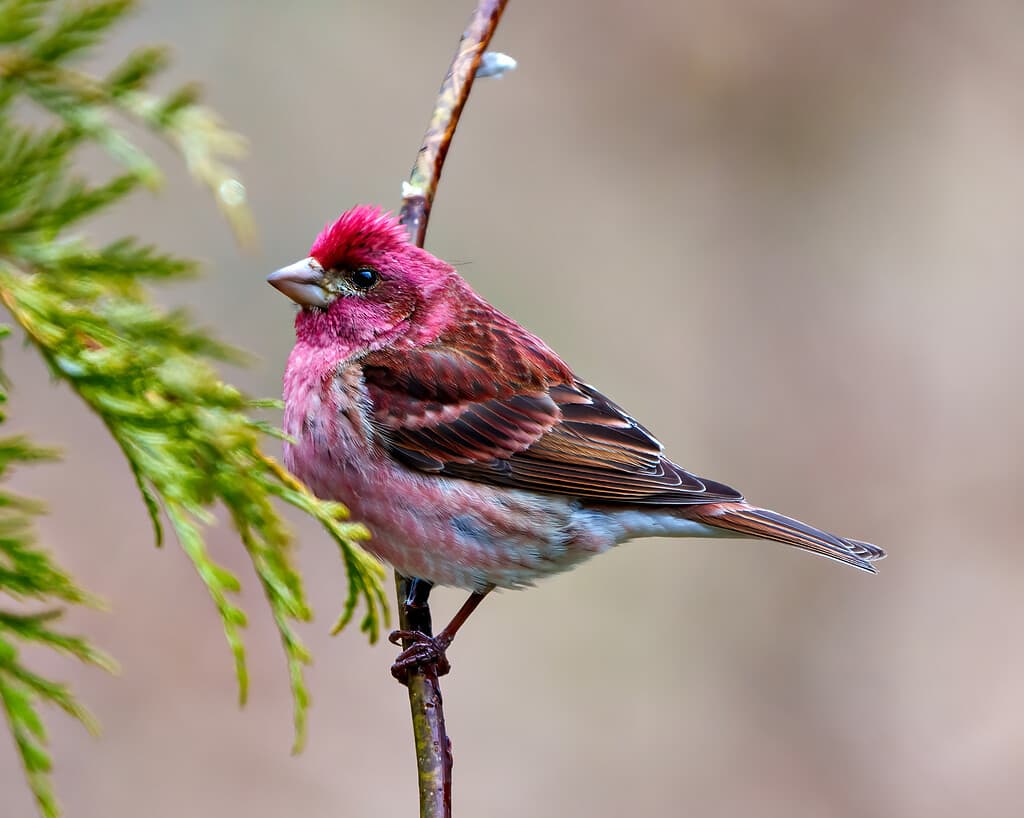
There are roughly 230 species of finches!
©Rejean Bedard/iStock via Getty Images
House finches are quite small, generally weighing less than an ounce. originally, these birds only lived in the western portion of the United States. Eventually, they were brought to the Eastern portion of the country and have thrived there.
The purple finch is the official state bird of New Hampshire! You can find house finches all over New Hampshire including near farmland, forest, and your backyard. Due to their noisy nature, you’ll definitely know if one is nearby.
The photo featured at the top of this post is © Rejean Bedard/iStock via Getty Images
Thank you for reading! Have some feedback for us? Contact the AZ Animals editorial team.






